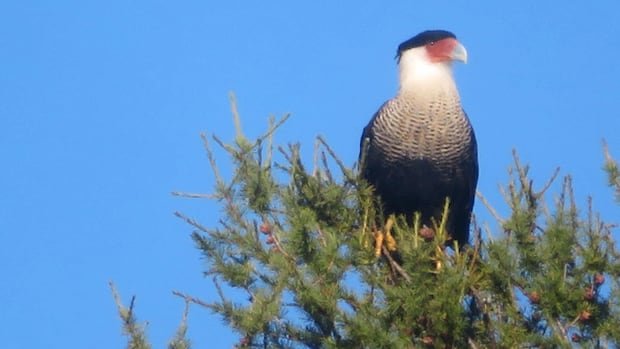After an extensive journey to the northern Ontario wilderness and multiple days of surveying the trees near Foleyet, Chris Blomme and his birdwatching companions were preparing to return home to Sudbury. While inspecting the local dump, they were alerted by the sounds of several crows, indicating something unusual. Suddenly, a caracara appeared, flying over the area and perching in a conifer directly in front of them, presenting a remarkable sight.
The expedition was prompted by reports of a crested caracara sighting in the region. Although common in South and Central America, this bird is seldom observed beyond the southern United States. Blomme expressed surprise at the bird’s presence so far north, speculating that it may have been displaced by a hurricane or another significant weather event.
Accompanied by birdwatchers from distant locations like Toronto, many of whom maintain a “life list” documenting various bird species they have encountered, Blomme noticed the impact of their arrival in the small community of Foleyet, home to only 165 residents.
The influx of bird enthusiasts did not go unnoticed by locals, as Blomme recounted interactions with curious individuals who observed them with binoculars and cameras, offering insights on potential bird sightings. Some residents claimed to have spotted the crested caracara in the area the previous year.
Blomme pondered the bird’s chances of surviving the winter in the north, emphasizing that with sufficient food availability, even a tropical species like the crested caracara could endure the colder climate.

